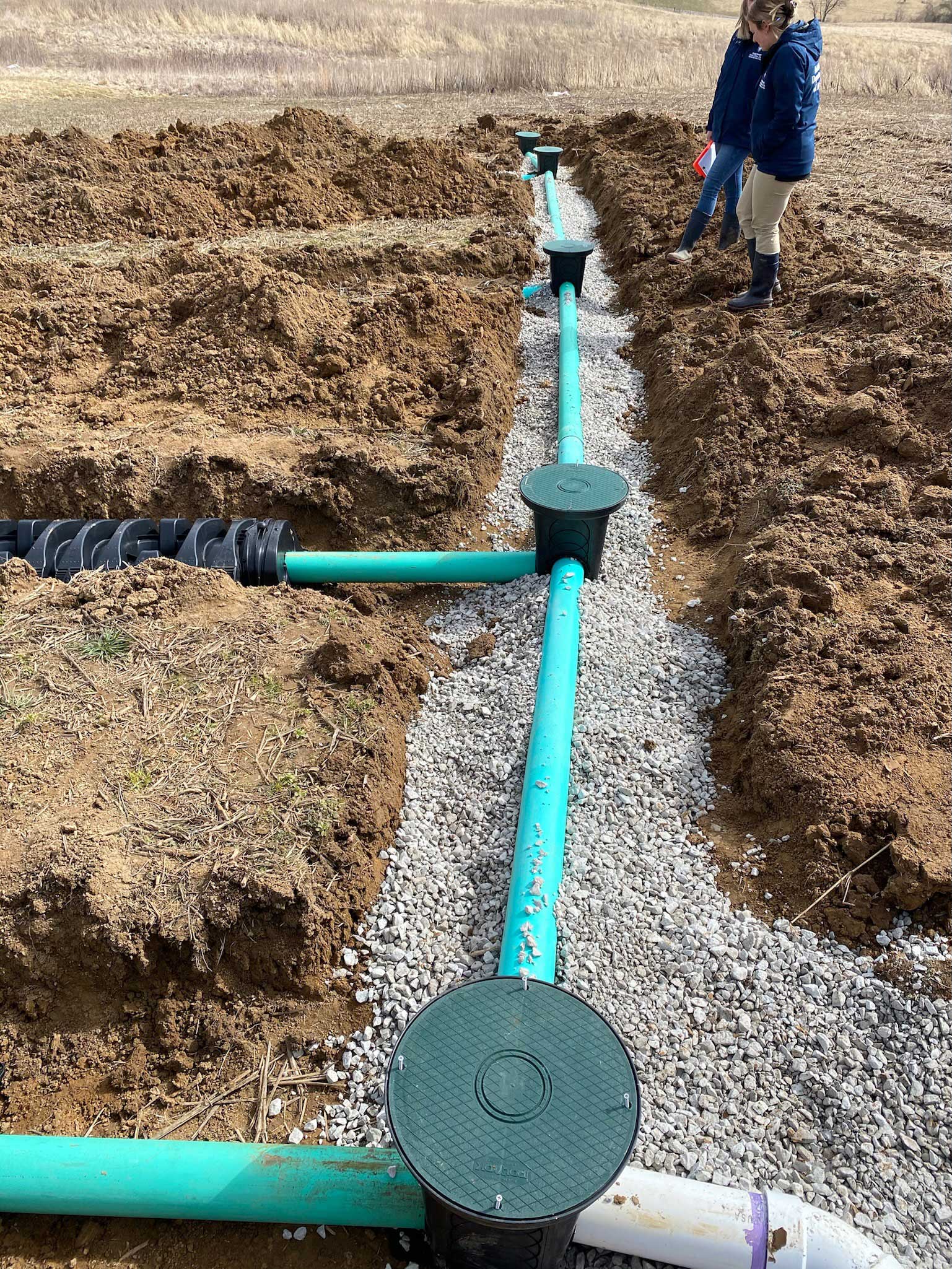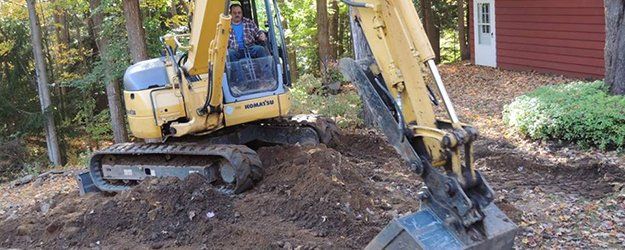Introducing the Art of Excavation: Pro Tips for Safe and Effective Digging
In the world of excavation, the mastery of risk-free and efficient excavating is an art kind that requires precision, expertise, and adherence to well-known methods. As dirt is turned and earth is relocated, the intricacies of excavation disclose themselves, requiring a keen understanding of equipment, dirt structure, security protocols, and ecological factors to consider. The proficiency required to navigate these aspects effectively can suggest the difference between an effective excavation job and a possible calamity. By unwinding the layers of this elaborate procedure, a world of understandings and approaches awaits those seeking to boost their excavation abilities to new elevations.
Importance of Appropriate Tools
To make sure the safety and security and efficiency of any kind of excavation project, utilizing the proper devices is extremely important. Excavation tasks vary in range and intricacy, varying from tiny household landscape design jobs to large-scale construction undertakings.
Excavators are essential pieces of machinery in any excavating procedure. These functional equipments can be found in numerous dimensions to suit different project requirements. Mini excavators are perfect for smaller tasks, while larger excavators tackle more extensive tasks successfully. Backhoes are an additional essential tools kind, integrating the functions of a loader and an excavator in one machine. They are beneficial for jobs calling for adaptability and maneuverability.
Aside from excavators, other critical equipment includes dump vehicles, trenchers, and excavators. Dispose vehicles are necessary for removing and delivering excavated products, while plates are made use of for digging deep and narrow trenches. Excavators master jobs that require pressing large quantities of dirt or debris. By purchasing the suitable tools, excavation projects can be finished securely, in a timely manner, and with precision.
Comprehending Dirt Composition
An extensive understanding of soil structure is basic for performing excavation tasks with accuracy and safety. Recognizing the different sorts of soil is crucial as it directly affects excavation techniques, equipment selection, and general task performance. Soil make-up usually includes 4 main components: sand, silt, clay, and organic issue. Each part has unique residential or commercial properties that influence how soil reacts to excavation procedures.
Silt bits are smaller than sand but bigger than clay, using modest drain and cohesion. Organic issue, such as rotting plant material, impacts dirt fertility and stability.
Before starting excavation, carrying out soil tests to identify its structure and qualities is important. This details assists in selecting the ideal devices, applying safety actions, and creating excavation techniques customized to the certain soil problems - lancaster trenching. By understanding dirt composition, excavation specialists can improve project end results while guaranteeing safety and security and adherence to best techniques
Precaution and Procedures
Recognizing soil make-up is the cornerstone upon which security actions and procedures for excavation jobs are built, making sure the well-being of workers and the success of the endeavor. There are several crucial steps that have to be applied to alleviate threats and stop mishaps. when it comes to security during excavation.
First and foremost, prior to any type of excavating begins, a detailed inspection of the website need to be performed to identify any type of potential dangers such as underground energies, unsteady soil conditions, or nearby structures that can present a threat. It is vital to have a qualified individual oversee the excavation procedure to guarantee that all safety and security procedures are complied with strictly.
Furthermore, all employees associated with the excavation has to be effectively trained in secure digging techniques and the appropriate operation of equipment. Personal safety devices (PPE) such as construction hats, high exposure clothes, gloves, and safety and security boots should be put on whatsoever times to lessen the threat of injuries. lancaster excavation. Normal safety conferences and tool kit talks must likewise be conducted to maintain all workers educated concerning possible threats and strengthen safe work methods. By adhering to these safety procedures and procedures, excavation projects can be finished successfully and without incident.
Reliable Excavation Planning
When starting an excavation job, meticulous preparation is necessary to make sure efficiency, safety, and effective outcomes. Reliable excavation preparation involves a number of essential actions that are vital for the smooth implementation of the job. The initial step is to conduct a comprehensive website analysis to recognize any type of potential dangers, such as underground utilities or look at these guys unstable soil conditions. This information is essential for creating a comprehensive excavation plan that includes precaution and take the chance of mitigation approaches.
Once the site evaluation is full, the next action is to develop a clear timeline and timetable for the excavation tasks. This includes identifying the series of tasks, devices requirements, and manpower allotment. Correct organizing aids stay clear of delays and makes certain that the project remains on track.

In addition, communication among all team members is extremely important during the planning phase. Clear regulations, routine updates, and efficient sychronisation are crucial for a successful excavation job. By spending effort and time in careful preparation, excavation groups can dramatically improve efficiency, lessen dangers, and accomplish effective results.

Taking Care Of Environmental Considerations
With raising emphasis on ecological sustainability in building practices, taking care of ecological considerations has actually come to be a crucial aspect of excavation tasks. Excavation activities have the potential to affect the surrounding environment via dirt erosion, debris runoff, environment disruption, and contamination of water resources. To mitigate these threats, it is crucial to execute ideal methods that focus on environmental defense.

Furthermore, proper waste management is important to stop soil and water contamination. Applying treatments for the disposal of hazardous products, recycling of waste products, and decreasing the usage of unsafe chemicals can significantly decrease the environmental impact of excavation tasks. By incorporating these techniques right into excavation planning and execution, building and construction firms can make sure that their jobs are not only safe and effective yet likewise ecologically accountable.
Conclusion
To conclude, understanding the art of excavation needs a complete understanding of appropriate devices, soil make-up, safety and security steps, and effective preparation. By complying with these standards and taking into consideration environmental factors, excavations can be conducted securely and efficiently. It is crucial to prioritize safety and performance in every digging task to make sure successful end results.
As dirt is turned and planet is moved, the intricacies of excavation disclose themselves, demanding an eager understanding of equipment, soil composition, safety and security procedures, this page and ecological considerations.To ensure the security and efficiency of any kind of excavation job, utilizing the proper tools is critical.A comprehensive grasp of soil composition is essential for executing excavation jobs with accuracy and safety. Recognizing the different kinds of soil is vital as it directly affects excavation approaches, equipment choice, and total task efficiency. By comprehending dirt make-up, excavation specialists can enhance task end results while making certain safety and security and adherence to finest techniques.
Comments on “Lancaster Excavation - Expert Excavation Services in Lancaster, OH”